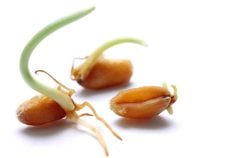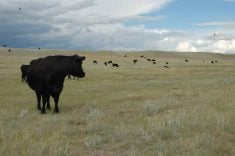A recent article in the Canadian Veterinary Journal examined how common selenium deficiency occurred in beef cows across Western Canada.
Selenium is an essential micro-mineral that is a component of five anti-oxidant proteins within the ruminant animal that help prevent tissue damage. A deficiency in selenium often produces a nutritional muscular degeneration in young growing animals.
Selenium deficiency has been associated with clinical and subclinical conditions in cattle, including cardiac and skeletal muscle damage, increased calf losses, reproductive inefficiency, retained placenta and reduced weight gain.
Read Also

Manitoba community projects get support from HyLife
HyLife Fun Days 2025 donated $35,000 each to recreation and housing projects in Killarney, Steinach and Neepawa earlier this fall.
It may also suppress the immune system and generally increase susceptibility to infectious disease.
However, the most common presentation of selenium deficiency is seen in young rapidly growing calves, lambs and kids.
These young animals are usually born to dams that have consumed a selenium deficient diet during their gestation period.
The primary effect of selenium deficiency is muscular degeneration in the skeletal or cardiac muscles. Affected young calves may show signs of muscle weakness, stiffness and difficulty rising. Their muscles may also become firm and painful.
It may take more effort to breathe if respiratory muscles are affected, while the calf often dies suddenly when cardiac muscles are affected.
Veterinarians can recognize the signs of selenium deficiency during post-mortems by looking for pale discoloured muscles with white streaks in the muscle fibres. This has led to the common name of white muscle disease for calves that are affected with selenium deficiency.
The recently published study by University of Saskatchewan veterinarians collected blood samples from 781 beef cows in 66 western Canadian herds at the end of the grazing season.
The herds were partially selected for their reproductive performance: 31 had pregnancy rates of less than 90 percent and 35 had pregnancy rates of greater than 90 percent.
It was interesting to see that only 56 percent of the herds received mineral supplementation while on pasture, mostly in the forms of loose minerals, blocks or tubs, while 44 percent received no minerals while on pasture. More than 90 percent of the herds were supplemented after the grazing season with some form of mineral supplementation.
When blood samples were tested for selenium levels, 10.6 percent of the cows were found to be deficient in selenium at the end of the grazing season. As well, more than 86.8 percent of the cows were either deficient in selenium (less than .025 ppm) or had less than adequate levels of selenium (less than 0.08 ppm)
In total, 31.8 percent of the herds had at least one selenium deficient animal.
The authors of the study could not show any associations between selenium levels in the herd and the risk of non-pregnancy, stillbirths, weak calves or retained placentas.
However, herds with low selenium levels in their cows at the end of the grazing season had an increased risk of nutritional myopathy (white muscle disease) in the next year’s calf crop.
The study included post-mortems of almost all deaths on the farm, and nutritional myopathy was a common diagnosis.
It was seen in six percent of aborted fetuses, 20 percent of stillborn calves, 46 percent of neonatal calf deaths and 40 percent of older calf deaths.
Selenium moves through a soil-plant-animal cycle, and selenium concentrations were lowest in gray or black soil and areas where the forage was selenium deficient.
Mineral supplementation after the grazing season may have helped prevent potential problems that might have occurred due to selenium deficiency.
This study demonstrated that many areas of Wes tern Canada are selenium deficient and that supplementation is necessary to prevent problems with clinical selenium deficiency.
Producers should work with their nutritionist and veterinarian to ensure that cows have adequate mineral supplementation to reduce the potential losses caused by white muscle disease.
John Campbell is head of Large Animal Clinical Sciences at the University of Saskatchewan’s Western College of Veterinary Medicine.














